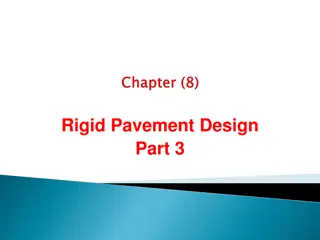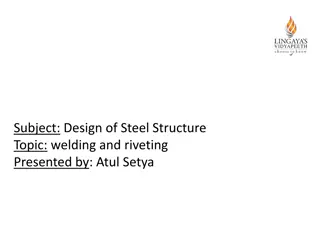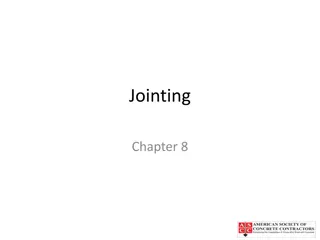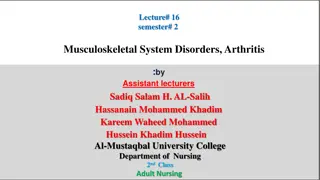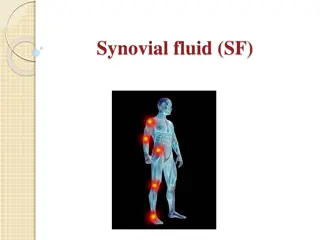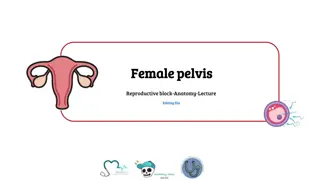
Understanding the Importance and Types of Rock Joints in Geology
Discover the significance of rock joints in geology, including their effects on rock competence, porosity, and permeability. Learn about different types of joints and their classification based on relative attitude. Explore how joints in rocks differ from faults and their implications in civil engineering.
Download Presentation

Please find below an Image/Link to download the presentation.
The content on the website is provided AS IS for your information and personal use only. It may not be sold, licensed, or shared on other websites without obtaining consent from the author. If you encounter any issues during the download, it is possible that the publisher has removed the file from their server.
You are allowed to download the files provided on this website for personal or commercial use, subject to the condition that they are used lawfully. All files are the property of their respective owners.
The content on the website is provided AS IS for your information and personal use only. It may not be sold, licensed, or shared on other websites without obtaining consent from the author.
E N D
Presentation Transcript
JOINTS Dr. A.V.Tejankar Professor & Head Dept. of Geology Deogiri College, Aurangabad
Effects of Joints From the civil engineering point of view, joints are important because they split the rocks into a number of pieces which, in turn, reduce the competence of rock mass, increase the porosity and permeability and make them susceptible to quick decay andweathering. Joints But a few advantages that accompany joints are; their occurrence increases the ground water potential in anyplace.
Joints, though they resembles faults by Appearingasfracturesin rocks,arenotas dangerousas faults. Thisissoprimarily because the region affected by joint are not liable to recurrenceofjointsin futureashappensin the caseoffaults.Thusplaces where joints occur are notveryunstableforfoundationpurpose.Alsothe areaaffectedbyjoints canbeeasilyimproved by methods suchassuitablecementgroutingor plugging.
Parts of a Joint Joints like faults, refer to the fracture in rocks. Hence, like faults, inclined and vertical joints alsocanbedescribedbytheir attitude. However, in joints the fracturing blocks are not namedasfootwall or hangingwall.
Types of Joints 1. Strike Joint 2. Dip Joint 3. ObliqueJoint 4. TensionJoint 5. ShearJoint
Classification of Joints Classification based on the relative attitude of joints When the joints are parallel to the strike and dip of adjacent beds, they are called Strike Joints or Dip Joints, respectively. If the strike direction of joints is parallel neither to the strike nor dip direction of adjacent beds, then such jointsarecalled ObliqueJoints. If the strike direction, dip direction and dip amount) coincides completely with the attitude of adjacent beds,they arecalled bedding joints.
Classification of Joints
JOINTS Effects of Joints From the civil engineering point of view, joints are important because they split the rocks into a number of pieces which, in turn, reduce the competence of rock mass, increase the porosity and permeability and make them susceptible to quick decay andweathering. Joints But a few advantages that accompany joints are; their occurrence increases the ground water potential in anyplace.
Joints, though they resembles faults by appearingasfracturesin rocks,arenotas dangerousas faults. Thisissoprimarily because the region affected by joint are not liable to recurrenceofjointsin futureashappensin the caseoffaults.Thusplaces where joints occur are not very unstable for foundation purpose. Also the improvedby methods suchassuitablecementgroutingor plugging. area affected by joints can be easily
Parts of a Joint Joints like faults, refer to the fracture in rocks. Hence, like faults, inclined and vertical joints alsocanbedescribedbytheir attitude. However, in joints the fracturing blocks are not namedasfootwall or hangingwall.
Types of Joints 1. Strike Joint 2. Dip Joint 3. ObliqueJoint 4. TensionJoint 5. ShearJoint
Classification of Joints

